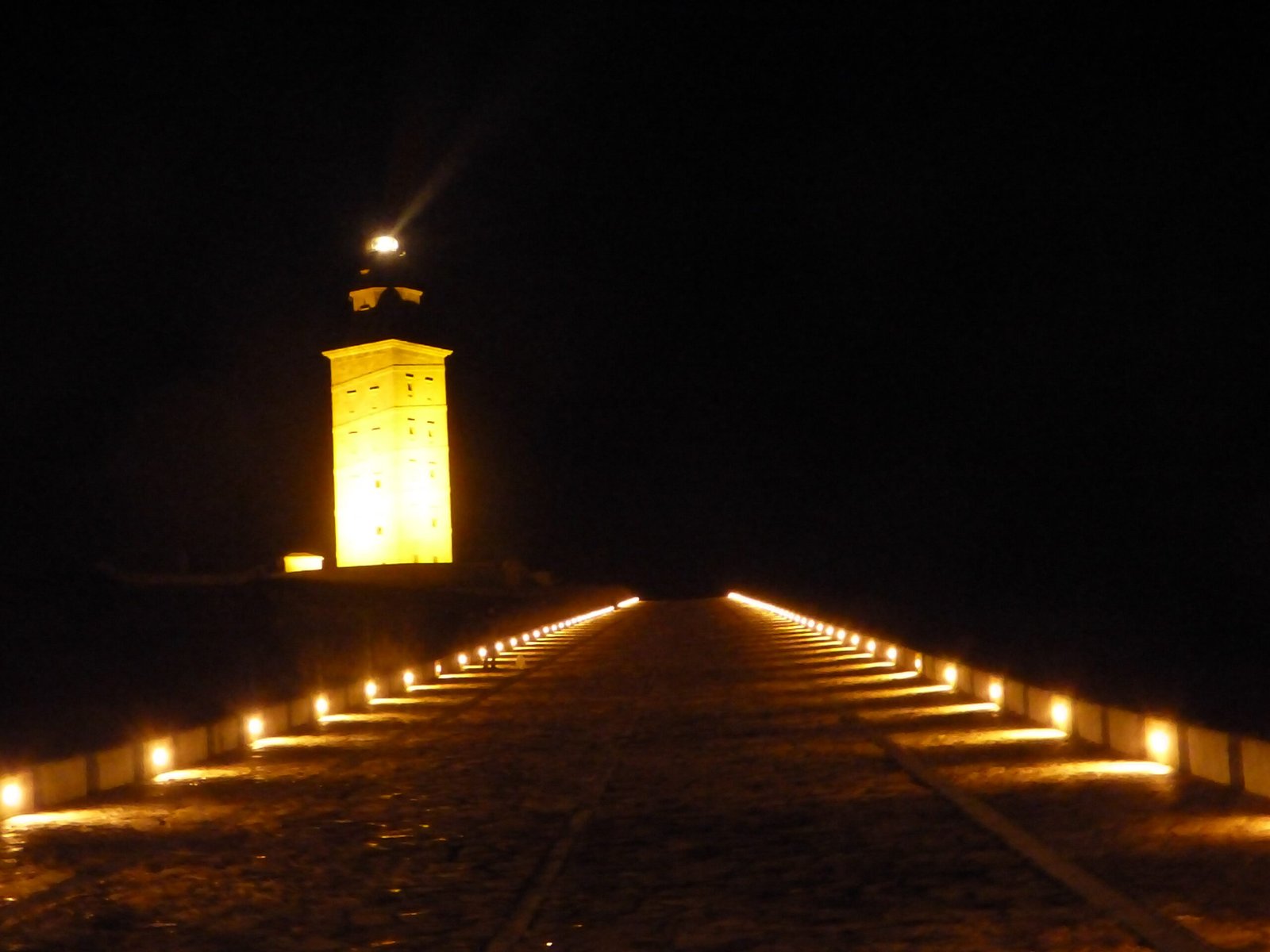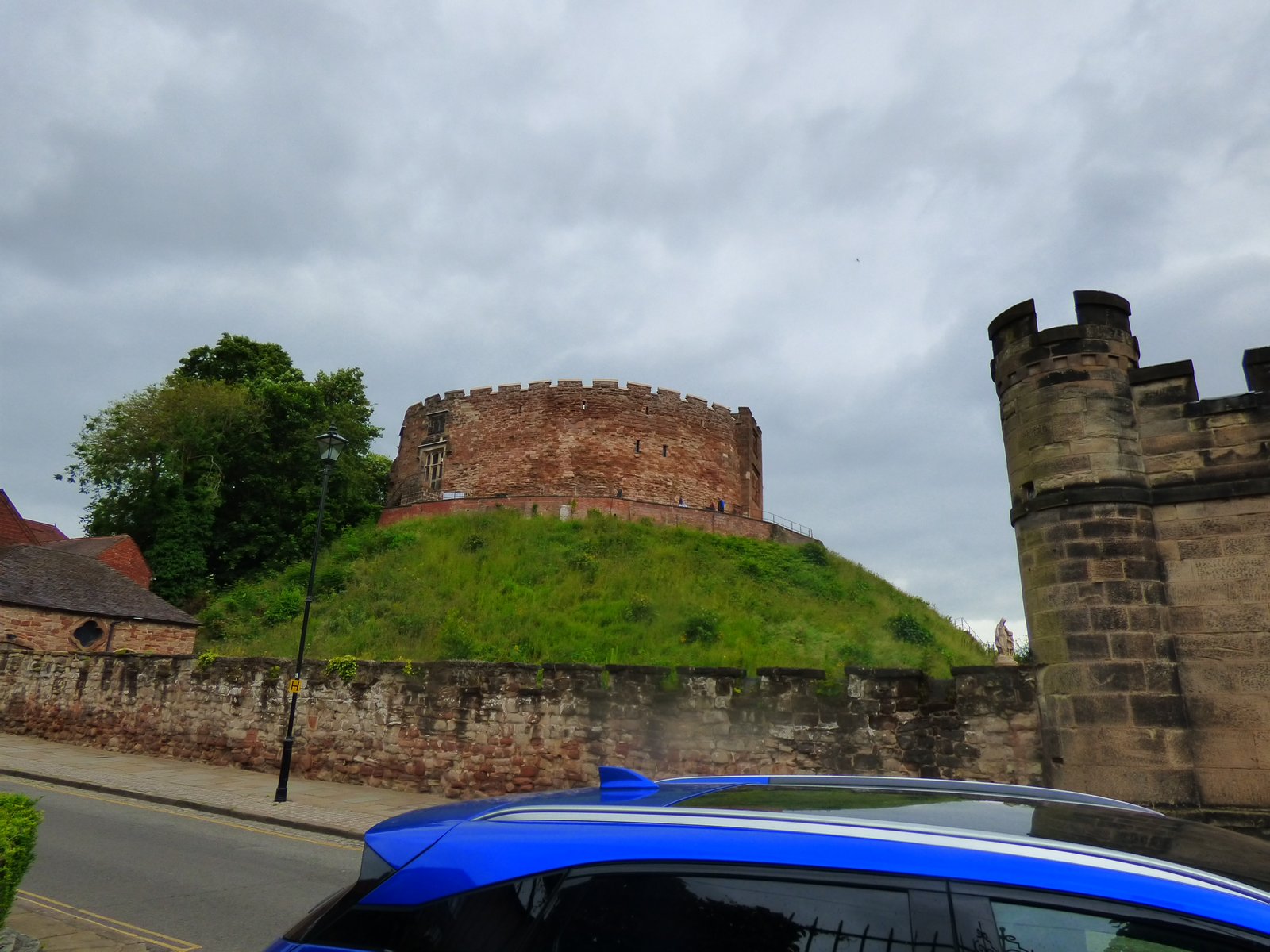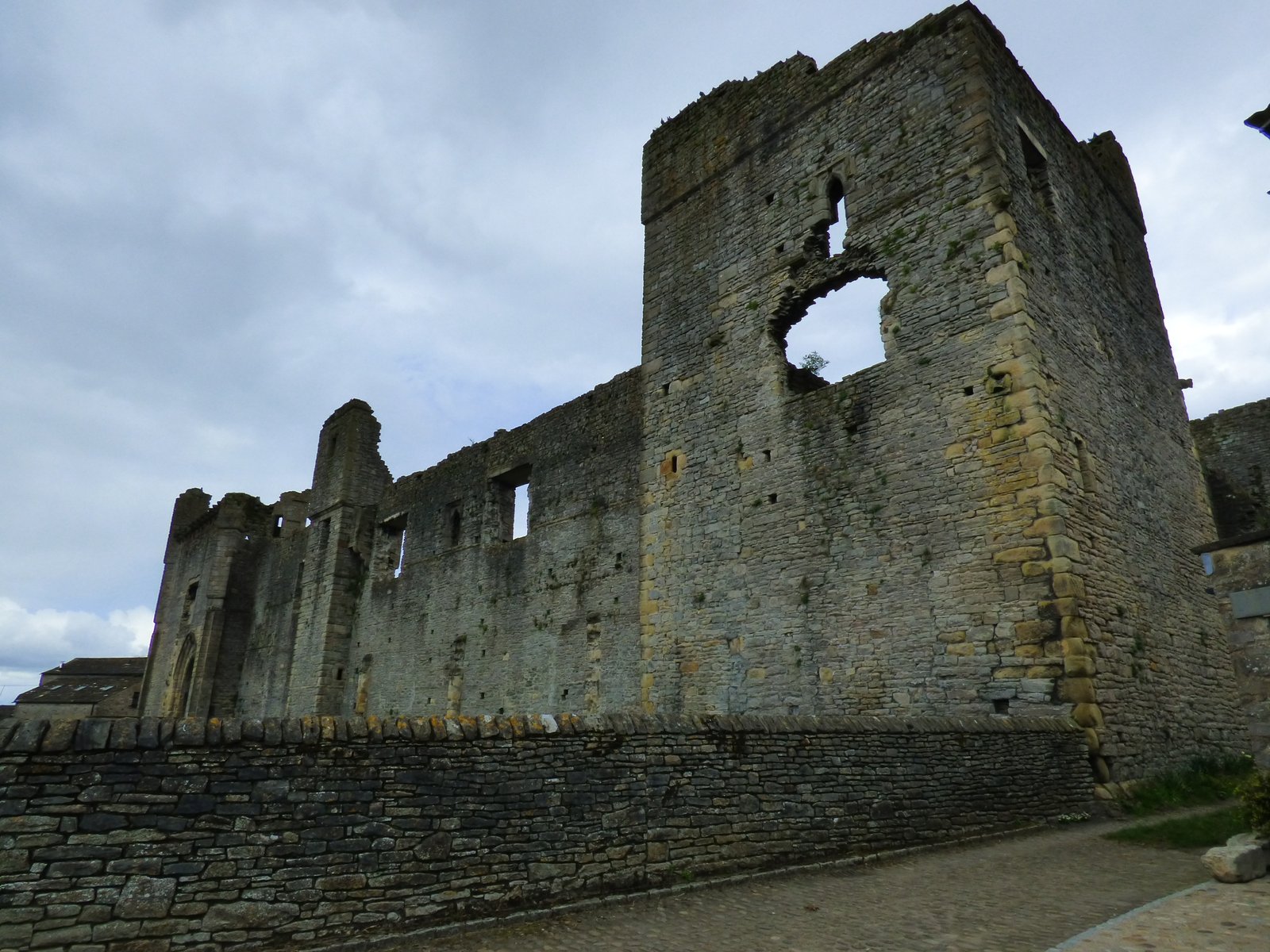Linked Pages
Earthworks at Bolton Castle

 Bolton Castle, an ancient fortress located in the heart of Wensleydale, Yorkshire, stands as a testament to medieval architecture and the Scrope family's legacy. Constructed between 1378 and 1399 by Sir Richard le Scrope, Chancellor to Richard II, the castle was designed both for defence and as a statement of wealth and power. Its quadrangular layout, with imposing towers at each corner, exemplifies the military architecture of the period, while also providing luxurious living quarters for the family.
Bolton Castle, an ancient fortress located in the heart of Wensleydale, Yorkshire, stands as a testament to medieval architecture and the Scrope family's legacy. Constructed between 1378 and 1399 by Sir Richard le Scrope, Chancellor to Richard II, the castle was designed both for defence and as a statement of wealth and power. Its quadrangular layout, with imposing towers at each corner, exemplifies the military architecture of the period, while also providing luxurious living quarters for the family.
 The castle's strategic importance is underscored by its selection as the prison for Mary, Queen of Scots, following her defeat at the Battle of Langside in 1568. Mary was held in the south-west tower's apartments, which were deemed suitable for a queen, reflecting the castle's ability to provide both security and comfort.
The castle's strategic importance is underscored by its selection as the prison for Mary, Queen of Scots, following her defeat at the Battle of Langside in 1568. Mary was held in the south-west tower's apartments, which were deemed suitable for a queen, reflecting the castle's ability to provide both security and comfort.
Mary, Queen of Scots' experience at Bolton Castle was a period marked by both comfort and captivity. After her defeat at the Battle of Langside in 1568, Mary fled to England, seeking protection from her cousin, Queen Elizabeth I. However, she was perceived as a threat due to her claim to the English throne and her Catholic faith, which was at odds with Elizabeth's Protestant rule. Consequently, Mary was confined at Bolton Castle, a decision influenced by its formidable defences and remote location in the Yorkshire Dales, which made it an ideal place to hold such a high-profile captive.
 During her six-month stay at Bolton Castle, Mary was not treated as a typical prisoner. She was given the liberty to roam the castle grounds, engage in activities such as embroidery and reading, and retain a retinue of servants to attend to her needs. The castle's south-west tower was allocated for her use, providing living quarters that were suitably regal to reflect her status as a queen. Despite these comforts, Mary's time at Bolton was undoubtedly a period of uncertainty and anxiety, as she was kept under strict surveillance and her future remained precarious.
During her six-month stay at Bolton Castle, Mary was not treated as a typical prisoner. She was given the liberty to roam the castle grounds, engage in activities such as embroidery and reading, and retain a retinue of servants to attend to her needs. The castle's south-west tower was allocated for her use, providing living quarters that were suitably regal to reflect her status as a queen. Despite these comforts, Mary's time at Bolton was undoubtedly a period of uncertainty and anxiety, as she was kept under strict surveillance and her future remained precarious.
 The castle's owner, Lord Scrope, was tasked with ensuring Mary's secure confinement, yet he was instructed to maintain a level of dignity befitting her royal status. This delicate balance between hospitality and imprisonment was a testament to the political complexities of the time. Mary's presence at Bolton Castle also attracted notable figures, including the Earl of Shrewsbury and Sir Francis Knollys, who were involved in her custody and provided accounts of her treatment and behaviour during her stay.
The castle's owner, Lord Scrope, was tasked with ensuring Mary's secure confinement, yet he was instructed to maintain a level of dignity befitting her royal status. This delicate balance between hospitality and imprisonment was a testament to the political complexities of the time. Mary's presence at Bolton Castle also attracted notable figures, including the Earl of Shrewsbury and Sir Francis Knollys, who were involved in her custody and provided accounts of her treatment and behaviour during her stay. 
Mary's time at Bolton Castle was a brief chapter in her prolonged captivity in England, which lasted for 19 years. It was a period that began with some degree of hope for her cause but gradually descended into despair as her situation became increasingly dire. The castle served as a temporary haven before she was moved to more secure locations, reflecting the ongoing concerns about her influence and the potential for her to become a focal point for Catholic dissent.
 The legacy of Mary's imprisonment at Bolton Castle continues to intrigue historians and visitors alike. The castle remains a place of historical significance, where one can walk the same halls and chambers that once housed a queen whose life story is woven into the fabric of British history. The events that unfolded within its walls are a reminder of the turbulent times of the Tudor and Stuart eras and the personal tragedies that often accompanied the quest for power and sovereignty in the British Isles. Mary's experience at Bolton Castle is a poignant reflection of the complexities of her life, caught between the roles of a queen, a captive, and a figurehead for religious and political movements that shaped the course of history. Her time there is emblematic of the castle's multifaceted history, serving not only as a fortress but also as a home, a prison, and a stage for significant historical events.
The legacy of Mary's imprisonment at Bolton Castle continues to intrigue historians and visitors alike. The castle remains a place of historical significance, where one can walk the same halls and chambers that once housed a queen whose life story is woven into the fabric of British history. The events that unfolded within its walls are a reminder of the turbulent times of the Tudor and Stuart eras and the personal tragedies that often accompanied the quest for power and sovereignty in the British Isles. Mary's experience at Bolton Castle is a poignant reflection of the complexities of her life, caught between the roles of a queen, a captive, and a figurehead for religious and political movements that shaped the course of history. Her time there is emblematic of the castle's multifaceted history, serving not only as a fortress but also as a home, a prison, and a stage for significant historical events.  The Scrope family's influence is evident in the castle's construction, which cost a staggering 18,000 marks, showcasing their financial resources and ambition.
The Scrope family's influence is evident in the castle's construction, which cost a staggering 18,000 marks, showcasing their financial resources and ambition.
Despite its grandeur, Bolton Castle has not escaped the scars of history. It sustained significant damage during the English Civil War when it was besieged by parliamentary forces. Yet, it remains one of the best-preserved medieval castles in the country, offering visitors a glimpse into the past with its authentic medieval features, such as the portcullis and the original hearth with its innovative smoke tunnels.
Bolton Castle's history is not just a series of dates and events; it is a narrative of endurance, adaptation, and cultural significance. It continues to stand as a proud monument to the past, while also embracing its role as a dynamic and engaging part of the present.






















